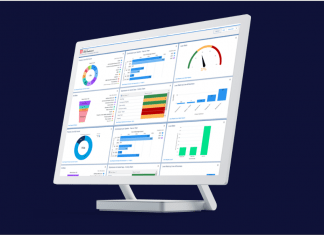In the rapidly evolving world of insurance and InsurTech, the term “big data” is gaining significant traction. With implications for risk assessments, policy pricing and customer interactions, insurance industry professionals explore how it is driving innovation.
The term “big data” refers to the vast volumes of structured and unstructured data collected from various sources that, when analysed, can provide valuable insights to drive business decisions and improve operational efficiency. But what does it really mean for the industry, and how is it transforming the traditional landscape of insurance?
For insurance providers, big data is akin to a gold mine. It comes from numerous sources such as customer demographics, social media engagement, online behaviour, claims histories, and risk data. It even includes real-time data from connected devices like smart home systems and car telematics.
The industry’s ability to collate, process, and analyse this data on a large scale is fundamentally altering how insurers assess risk, price policies, and interact with their customers.
Mike Winterle, product marketing manager, at cloud-native insurance platform Novidea, said that big data is increasingly transforming the insurance industry by “enabling more accurate risk assessment, improving underwriting and pricing, streamlining the claims handling process, and enhancing the customer experience.”
Areas of innovation
According to Melanie Hayes, CMO and co-founder of cyber insurance solutions provider KYND, big data is being used in several ways. One of the primary uses is in risk management.
“By analysing large amounts of data from a variety of sources, insurers can gain a better understanding of the risks associated with different types of coverages. This can help insurers to price policies more accurately and effectively manage their portfolios’ risk exposure.”
However, these large amounts of data are often so vast and complex that it cannot be easily processed and analysed using traditional data processing tools. Hayes said that insurance companies are using advanced analytics tools from companies like KYND to analyse this data.
“This data analysis helps insurers to better understand the risks associated with different types of businesses and to tailor their policies accordingly,” Hayes said. In cyber insurance specifically, big data is enabling insurers to make data-informed decisions, manage risks more effectively, and provide better customer service. “As data analytics and machine learning continue to evolve, we can expect to see even more innovative uses of big data in the insurance industry in the future.”
Novidea’s Winterle agreed that big data can help insurers make more informed decisions and streamline their operations; it is being leveraged across areas such as pricing, underwriting, claims management, risk mitigation and fraud detection.
In pricing and underwriting for example, Winterle said big data is being deployed to assess risk more accurately and to identify patterns that may affect potential future claims. The more data underwriters have access to, the better position they are in to evaluate different types of risks.
Elsewhere in claims management, Winterle said big data can be used to improve the efficiency of claims processing and to identify fraudulent claims. “Claims can now be processed faster and more accurately delivering a better customer experience while improving operational efficiency.”
AI: the genie out the bottle?
According to Michele Trogni, CEO of Zinnia, customer expectations are shifting, and the insurance industry needs to continue to transform its business and be innovative. Effectively leveraging big data is part of this.
Developments in technology have accelerated the role of big data. Trogni said that distributed ledgers, for example, have been a significant technological development that has and will continue to influence the role of data in insurance. A distributed ledger is a database that is shared and synchronised across multiple sites, institutions or geographies, and any changes or additions made to the ledger are copied to all participants in a matter of seconds. They use the same technology that is used by blockchain.
Further, Trogni added that immutable data ledgers will shape a traditionally analogue industry. “These will open the door for more effective risk transfer, enabling a better experience for the customer as data will be right, first time.”
The industry has of course also seen an uptick in interest and usage around generative AI, as epitomised by the buzz around ChatGPT. Trogni noted that AI already enables InsurTechs like Policygenius to power better customer experiences, particularly making access quicker and ensuring experience is better customised for every consumer.
“We certainly let the genie out of the bottle in the last quarter when it comes to utilisation and implementation of generative AI, and I believe that when companies and the industry get comfortable with privacy and security, there will be many use cases that will be powered with generative AI.”
In the cyber insurance space, KYND’s Hayes noted that developments in technology have been paramount in the role of big data amid a rapid rise in digital crime globally. “As both insurers and brokers face challenges with keeping up with rapidly evolving cyber vulnerabilities, the insurance industry as a whole is looking to adopt new technology in order to manage their insureds’’ cyber risks.”
New technology such as AI-powered tools and machine learning, Hayes continued, can process and analyse large amounts of data quickly and accurately, enabling insurers and brokers to access insights and identify patterns that would be difficult and time consuming to detect using traditional methods.
The future of big data
Big data has become instrumental for the insurance industry, providing new opportunities for improvements and growth within the sector. KYND’s Hayes said she expects it to continue to solidify its impact on risk underwriting and transfer decisions in the future.
In cyber insurance, ready access to actionable threat intelligence and the ability to analyse large volumes of information for trends and patterns provided by big data risk analytics, Hayes continued, will empower insurers to more accurately underwrite and price risk, laying the ground for a more stable and sustainable cyber insurance market.
Novidea’s Winterle also expressed a positive sentiment for the future of big data in insurance. “[Big data has] the potential for even more accurate risk assessment, improved customer experiences, and streamlined operations. It’s in insurance will continue to expand as InsurTechs looks for new sources of data and methods to deliver it to insurers in meaningful methods.”
Zinnia’s Trogni added that as insurance is arguably behind the broader financial services industry in terms of data, technology, and transparency, this means the industry is “ripe for innovation and digitisation”. Therefore, there is a huge opportunity to fix inefficiencies and enable growth, ultimately improving the customer experience.
Looking ahead, Hayes said KYND would welcome increased partnership and collaboration between InsurTechs like KYND and insurance firms for the latter to benefit from cutting edge, powerful technologies combined with extensive industry expertise.
For Novidea’s Winterle, it is important to see the insurance industry to invest more in technology and data analytics. “Many players are still held back by creaking legacy systems,” he said, adding that greater connectivity and partnerships between InsurTechs will also aid this.
Keep up with all the latest FinTech news here.
Copyright © 2023 FinTech Global











